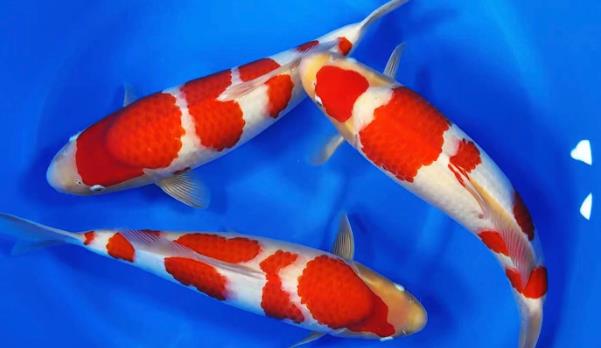Koi fish have a spindle-shaped body, divided into three parts: the head, trunk, and tail. They boast a robust build, vibrant colors, varied patterns, and graceful swimming postures, making them highly valuable for ornamental purposes. Below is a detailed introduction to the external characteristics of koi fish:

I. Body Shape Characteristics
Overall Form
Koi fish have a spindle-shaped body that is bilaterally symmetrical. They are relatively large in size, with a body length ranging from 0.6 to 1.5 meters and a weight between 10 and 45 kilograms.
Head Features
The front of the head has a mouth, which has no teeth on the lip margin but well-developed pharyngeal teeth for chewing.
On both sides of the middle part of the head are the eyes; above and in front of each eye is a nostril, and below and behind each eye are the gills for respiration.
Two pairs of barbels grow near the mouth—these are sensory organs used to search for food in mud.
Fin Characteristics
Koi fins are divided into pectoral fins, pelvic fins, dorsal fins, anal fins, and caudal fins, all of which serve as the fish’s locomotor organs.
The pectoral and pelvic fins function similarly to human limbs. If these fins are cut off or broken, they have the ability to regenerate.
II. Body Color and Patterns
Color Diversity
Koi exhibit an extremely rich range of body colors, including white, black, red, yellow, gold, blue, and green.
These colors are produced by the contraction and expansion of pigment cells located between the tissues beneath the epidermis and under the scales.
Pattern Characteristics
Koi patterns are diverse and variable. Common types include red-and-white patterns, tri-color patterns (red, white, black), and Utsurimono patterns (a black base with white, yellow, or red markings).
The distribution and shape of patterns vary by variety—some are symmetric and elegant, while others are natural and free-flowing.
Representative Varieties
Kohaku: Has a silvery-white base color with inlaid red patterns. The red patches are evenly distributed and have clear edges.
Taisho Sanshoku: Features three body colors (red, black, white) with patterns that form beautiful, natural designs.
Showa Sanshoku: Has a black base body with red and white patterns, and round black spots at the base of the pectoral fins.
Utsurimono: Has a black base body with triangular white, yellow, or red markings.
III. Skin and Scales
Skin Features
The body surface of koi is covered with scales. These scales are differentiated from dermal cells and act as a protective layer.
Beneath the scales is the dermis, which contains blood vessels and nerves. Mucus-secreting cells in the epidermis produce mucus that effectively prevents parasites from attaching to the body.
Scale Regeneration
If scales fall off, they can regenerate, but regenerated scales often appear irregular (a phenomenon known as "disordered scales").
Similar to the growth rings of a sawn tree trunk, koi scales have annual rings—these can be used to estimate the fish’s age.
IV. Sensory Organs
Lateral Line
Along the center of each side of the koi’s body, there is a longitudinal line of dots extending from the head to the tail—this is called the lateral line, a key sensory organ of the fish.
The lateral line can detect three types of mechanical stimuli: water flow, surface waves, and near-field sound waves. It allows the fish to accurately locate insects that fall into the water and perceive a sound range nine times wider than that of humans.
Additionally, the lateral line helps the koi maintain body balance.
Other Sensory Organs
Koi have no eyelids or tear glands, so their eyes are always wide open and never close.
Their irises cannot move, so their pupils cannot adjust. This means they cannot distinguish small objects and do not like strong direct light.
Koi have no outer ears, only inner ears—and no cochlea. However, both the inner ear and the swim bladder function in hearing.
